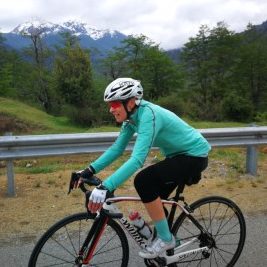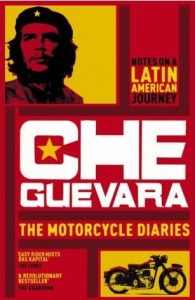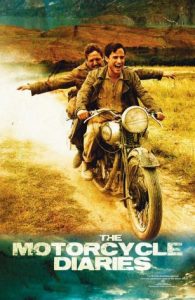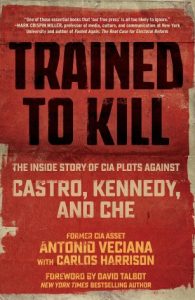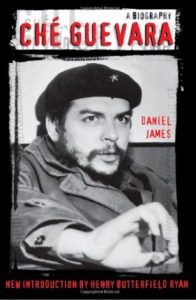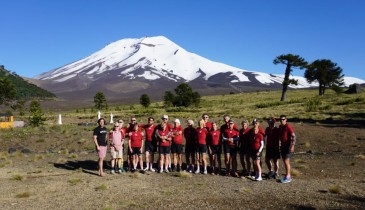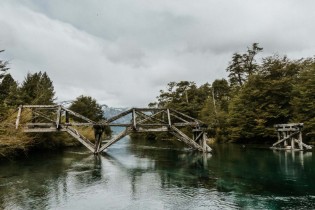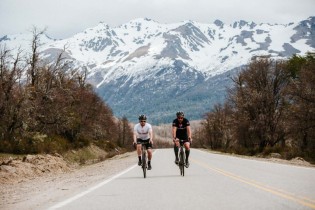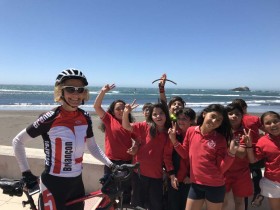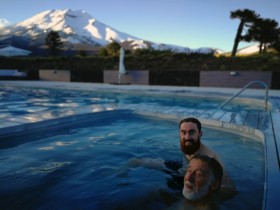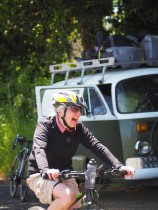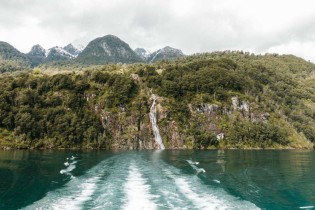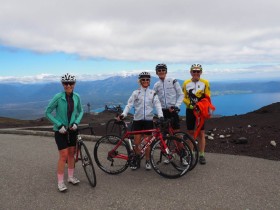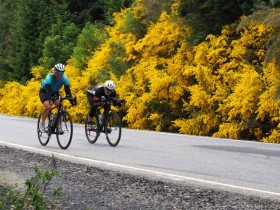CHILE CYCLING TOUR OVERVIEW
From Santiago’s sunlit plazas to Osorno’s snow-clad summit, this four-week odyssey through Chile is a journey across landscapes. We begin in the legendary wine valleys of Chile, where Jesuit missionaries planted the first vines and revolutionary spirits once rode. We follow the coast south to Pichilemu’s surf-pounded shores and Curanipe’s timeless fishing streets, before turning inland to cross the volcanic Andes into Patagonia — a land of smoking peaks, ancient forests, and wild beauty. Descending to the adventure capital of Pucón, we weave through the Lake District, ferry to the mythic islands of Chiloé, and return to circle Lago Llanquihue for the grand finale: the climb up Volcano Osorno, where the month’s epic ride gathers in one sweeping view. This is Chile at its most vivid — a country to be cycled, savoured, and remembered.
Conquistadors & Carmenère - Santiago, the city once founded by Pedro de Valdivia as the spearhead of Spain’s conquest of Mapuche lands, now a metropolis where glass towers and colonial churches face off like wary rivals. Southward, the route unwinds through the wine valleys of Casablanca, Maipú, and Colchagua — their ordered ranks of vines recalling not only the Jesuit missions who first cultivated them, but also the gaucho and peasant labourers whose hands have shaped the land. Here, the sun is generous, the soil rich, and the air perfumed with the promise of Carmenère and Cabernet! Che Guevara, in his youth, rode through these valleys on La Poderosa, a young medical student still yet to be transformed into the icon of rebellion; the same mountains and plains that framed his journey still roll past our wheels.
The Edge of the Continent - From the vinous heart of Chile, we turn west to meet the raw, salt-stung Pacific. The coast at Pichilemu, Chile’s surf capital, is less a beach resort than an elemental arena where ocean meets land in thundering dispute. Southwards to Curanipe, the coastline wears a wilder face — cliffs that might have served as perches for watchful Chono or Lafkenche fishermen to thrilling modern hotels set amongst the rugged beaches, rocks and dunes. This is a realm where nature insists on primacy; roads cling to the contours of headlands, sea fog curls inland, and every evening ends with a sunset fit to stir a conquistador’s painter.
Into Patagonia - From the sea, we pivot inland, cutting a diagonal towards Patagonia — a place that has always belonged as much to myth as to geography. Climbing through forests older than the Inca, we approach Lonquimay, its volcanic slopes crowned in snow, ringed by monkey puzzle trees that could be props from a Tolkien set. This volcanic wonderland shaped and fuelled the revolutionary thoughts of Ernesto ‘Che’ Guevara - he cuts a fascinating figure - equally revered and reviled around the world. Here we cross into Patagonia and the rest of the world feels very far away. The air is thinner, the silence deeper, the road a ribbon between mountains that smoulder quietly. Patagonia announces itself not with fanfare, but with the unshakable sense that here, nature has the final word.
Lakes, Legends & Lava - We descend to Pucón, where the perfect cone of Villarrica volcano looms over an adventure town alive with kayaks, mountaineers, and the scent of woodsmoke. From here, the Lake District unfolds: glacial waters still as mirrors, each framed by snowy peaks - it is magic cycling. A ferry carries us to Chiloé, where wooden churches rise like stranded ships and the sea’s myths are spoken as everyday truth: ghost ships, sea spirits, and ancient mariners who still shape the tide. It is a unique unforgettable place.
The Finale- Osorno's Summit - Back on the mainland, we circle Lago Llanquihue, its vast blue waters shimmering under the gaze of Osorno - the volcano whose snowcap gleams in the sun. To climb its slopes by bicycle is to confront both geology and legend — for in its symmetry there is something of the gods that the Mapuche feared and honoured. This final climb is a rite of passage — a long, elegant sweep of tarmac rising into the sky. At the summit, the view unfurls — lakes, volcanoes, and the green quilt of Chile stretching to the horizon. It’s the perfect finale to our epic odyssey!
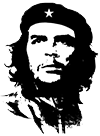
CHE
SANTIAGO TO VOLCANO OSORNO
Enter your details below to receive the full Che Odyssey Catalogue:
Max is Australian born but has spent much of the last 15 years in Chile. He speaks fluent Spanish and has covered most of South America by bike. He is a highly experienced bike guide and is the heart and soul of any tour he leads. His amazing attention to guests makes him much loved and valued by every rider who joins us on tour.
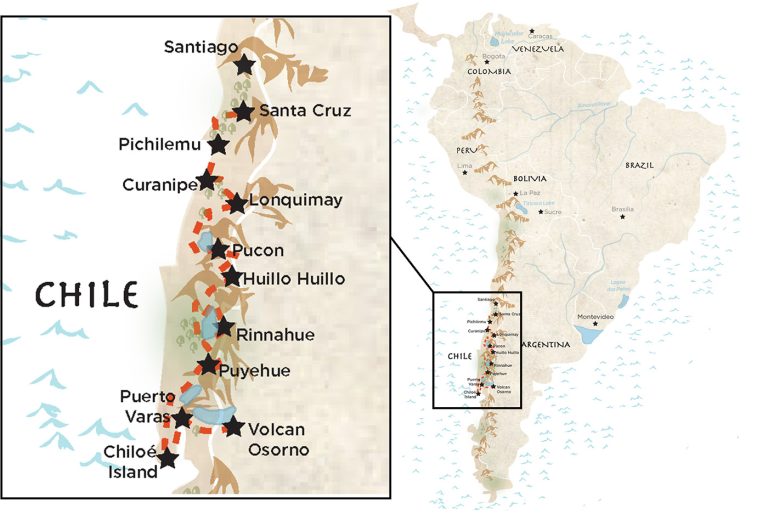
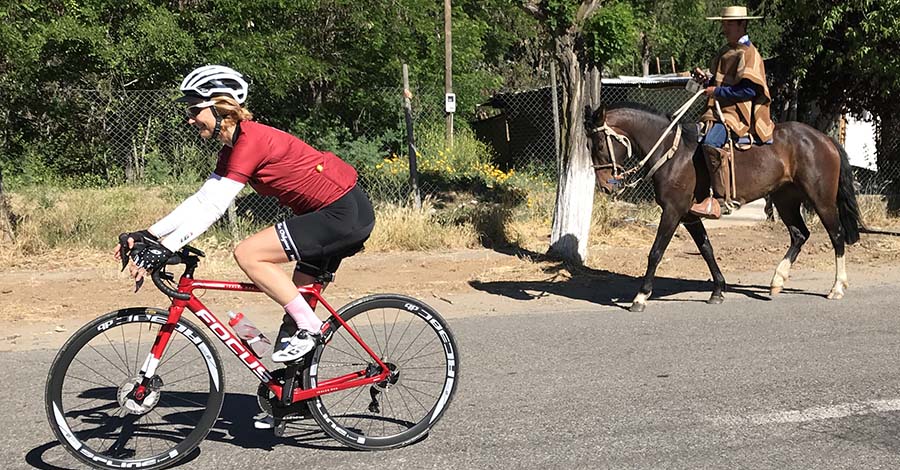
- Experience the famous Maule region's mouth-watering oceanic food culture
- Roll through the spectacular wine regions of Chile - The Casablanca, Maipu and Colchagua Valleys, tasting for yourself why their wines have such worldwide acclaim
- Roll along the stunningly rugged Pacific coast with its beautiful architectural hotels which we regularly take advantage of!
- From the Pacific Coast, climb the Andes to our hotel at the base of the smoking Volcano - Lonquimay
- Visit and swim, if you dare, in the chilling waterfall of Salto Del Indio!
- Che Guevara’s motorcycle route — Trace parts of the young Che’s legendary South American journey.
- As well as epic cycling, take a walk up a Volcano or a leisurely stroll on a beach to visit the incredible Piedra de la Iglesia (the church rock).
- Gaze up at Volcano Villarrica, this smoking giant is one of Chile's most awesome sights
- Finish in Pucon, centre of adventure and volcanoes in South America!
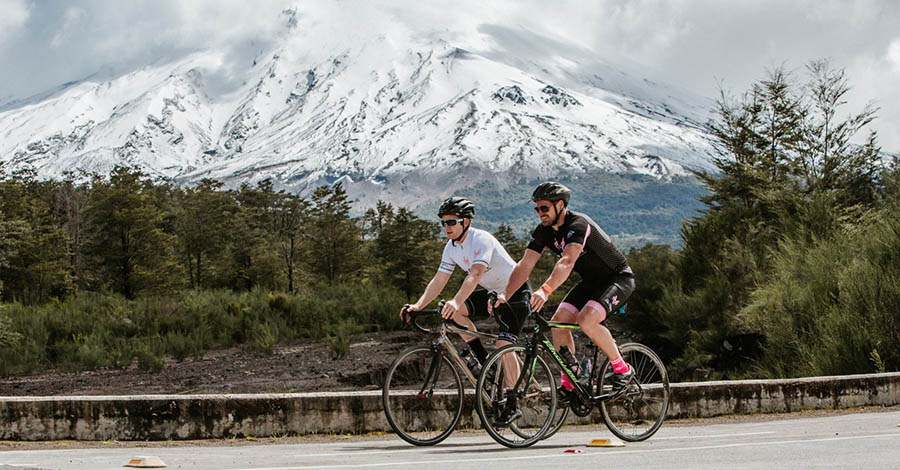
- True Patagonia - Volcanoes, lakes and class hotels - that is what this stage is about!
- Traversing the world’s second highest mountain range - The Andes!
- The Lakes district of Chile - Cycle around glacial lakes framed by snow-capped Andean peaks.
- One of a kind hotels including at Huilo Huilo with its tree house Hotel Nothofagus
- The views! - the breath-taking snowy behemoths of La Cordillera
- Chiloé’s wooden churches — Visit UNESCO-listed churches built by Jesuits, blending European and indigenous design.
- Chilote folklore — Hear legends of ghost ships, sea spirits, and mystical creatures unique to the islands.
- Gastronomy journey — From seafood fresh off the Pacific to Patagonian lamb and world-class Chilean wines, savor local flavors throughout.
- Cycle up Volcano Osorno, Chile's Alpe d'huez as our finale - you will not go away without surmounting a volcano or 2 by bike or by foot!
| Stage | Dates | Days | Distance | Grading* | Cost (USD) |
|---|---|---|---|---|---|
| Stage 1. Santiago to Pucon | 11 - 26 November | 16 (15 nights) | 1202 km / 747 miles | USD 9500 | |
| Stage 2. Pucon to V.Osorno | 26 November - 9 December | 14 (13 nights) | 946 km / 588 miles | USD 8400 | |
| Odyssey. Santiago to V.Osorno | 11 November - 9 December | 29 (28 nights) | 2148 km / 1335 miles | USD 16,850 |
| Stage | Stage 1. Santiago to V.Osorno | Stage 2. Lonquimay to V.Osorno | Odyssey. Santiago to V.Osorno |
| Dates | 11 - 26 Nov | 26 Nov - 9 Dec | 11 Nov - 9 Dec |
| Days | 16 | 14 | 29 |
| Distance | 1202 km | 747 mi | 946 km | 588 mi | 2148 km | 1335 mi |
| Grading* | 3 x |
3 x |
3 x |
| Cost (USD) | USD 9500 | USD 8400 | USD 16,850 |
| Stage | Dates | Days | Distance | Grading* | Cost (USD) |
|---|---|---|---|---|---|
| Stage 1. Santiago to Pucon | 8 - 23 November | 16 (15 nights) | 1202 km / 747 miles | USD 9950 | |
| Stage 2. Pucon to V.Osorno | 23 November - 6 December | 14 (13 nights) | 946 km / 588 miles | USD 8800 | |
| Odyssey. Santiago to V.Osorno | 8 November - 6 December | 29 (28 nights) | 2148 km / 1335 miles | USD 17,700 |
| Stage | Stage 1. Santiago to V.Osorno | Stage 2. Lonquimay to V.Osorno | Odyssey. Santiago to V.Osorno |
| Dates8 | 8 - 23 Nov | 23 Nov - 6 Dec | 8 Nov - 6 Dec |
| Days | 16 | 14 | 29 |
| Distance | 1202 km | 747 mi | 946 km | 588 mi | 2148 km | 1335 mi |
| Grading* | 3 x |
3 x |
3 x |
| Cost (USD) | USD 9950 | USD 8800 | USD 17,700 |
- Grading Notes - Che averages 78km and 900m per day on tour. Roads are quiet, 2nd stage is hillier. For more info see our gradings page.
- Please note pricing for Che is in USD.
- Rates are based on twin share. Single supplement = €100 USD per night.
- For bike rental options please click here.
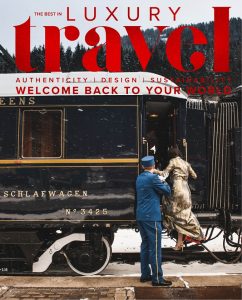
A great write-up in Luxury Travel Australia placing Che as one of the great adventures of 2023 and beyond.
South America is a truly amazing place to ride a bike!
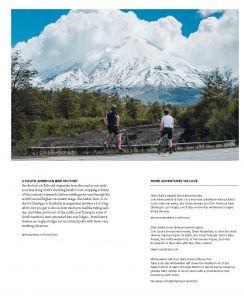
On Che - Santiago to Volcano Osorno, the beautiful lodges in the National Parks, designer hotels on the Pacific coast and hip wineries make for some exceptional stays. Here are some places you will stay at on the tour:
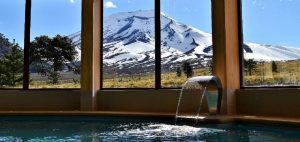
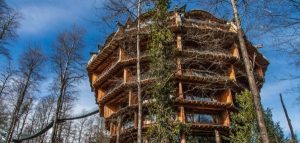
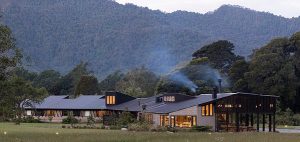
Food in Chile will excite your taste buds in ways you haven't experienced before. Some of the places we eat on the Che tour are amazing! Here are a few of our favourites:
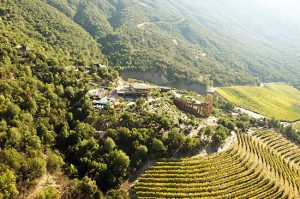
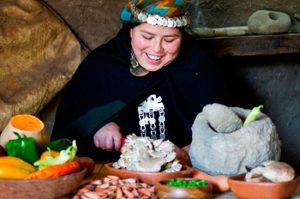
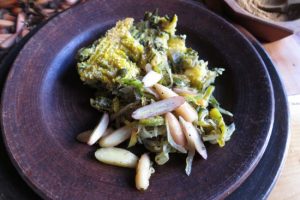
Read more about the Food and Wine of the regions we ride through
Chilean cuisine varies depending where you are, because of its ecological and climatic diversity. Right down its long coast, the ocean provides seafood as the main ingredient of its many dishes. Local crops are the staple of each regional cuisine, which have been prepared for thousands of years by native Indians before the Spanish arrived. Among the most important agricultural crops are maize, also known as choclo, quinoa and potatoes which have been cultivated since pre-Inca times providing nourishment in the high altitudes of the Andes.
Empanadas: Fabulous at any time of the day and found across Argentina and Chile are these small pies filled with all types of filling, although ham, cheese and meat are the most popular. During the week before Easter, special empanadas are filled with tuna or cod. A great snack to keep up energy for pedalling!
Pebre: This is probably the most ubiquitous condiment in Chile. The spicy mixture of chili peppers, onions, garlic, and cilantro comes in many variations in different regions of the country. The red colour of most pebres comes from red chili pepper paste, not tomatoes, so it does not taste like most North American salsas. You will find it served with virtually anything - a sandwich, as a dip for bread, or served over grilled meats. You cannot, and will not, want to escape this addictive Chilean dish.
Chile has a long viticultural history for a New World wine region dating to the 16th century when the Spanish conquistadors brought Vitis vinifera vines with them as they colonised the region.
Chile has 2,700 miles of coastline along the frigid Pacific Ocean and a climate that is described as midway between that of California and France. These factors allow perfect growing conditions for a number of wines that have recently been getting international acclaim.
Chile produces wines that are both fruity and herbaceous, similar to French wine, making it no wonder that French wine producers from Bordeaux have invested heavily in the region, making it their home away from home. The increase of wineries in Chile over the last 30 years relates partly to the large amount of French families immigrating to Chile during the late 20th century. Not only the French, but Germans, Spanish and Swiss also have invested in Chilean vineyards to share their fine tastes, experience and knowledge of the wine world.
We will be tasting internationally acclaimed New World wines throughout our tour, leaving you in no doubt why Chile is winning awards and competitions throughout, even over Old World wines. Chilean winemakers have been developing a distinct style for their Cabernet Sauvignon, producing an easy drinking wine with soft tannins and flavours of mint, blackcurrant, olives and smoke.
Two of the most refined wineries we will take you to during the Che Tour are in The Casablanca and San Antonio Valleys of the Aconcagua Wine Region. In Casablanca Valley, vines were first planted in the mid-1980s during the revitalisation of the Chilean wine industry. The area quickly became known for its white wines, most notably Sauvignon Blanc, Chardonnay as well as Pinot Noir, which thrive in its cooler climate.
Just below, the San Antonio Valley is known for producing Pinot Noir, Sauvignon Blanc and Chardonnay. Like the Casablanca Valley, San Antonio is highly influenced by the cooling effect of the Pacific Ocean, but whose soils are granitic, poor and well drained with a topsoil of clay, providing a good substrate for vines. It is seen as the best up and coming wine area of Chile.
Che Guevara has become a legendary political figure. Often equated heroically with rebellion, revolution, and socialism, many also remember that he was ruthless; he ordered executions without trial in Cuba. However, Guevara’s image remains a prevalent icon of leftist radicalism and anti-imperialism.
Che Guevara was born Ernesto de la Serna on 14 June 1928 in Rosario, Argentina. As a student he travelled widely and his worldview was changed by a nine-month journey he began in December 1951, with his friend Alberto Granado. That trip took them from Argentina through Chile, Peru, Colombia, and on to Venezuela, from which Guevara travelled alone on to Miami, returning to Argentina by plane (we only ride the Chilean Section!). During the trip, Guevara kept a journal that was posthumously published under his family’s guidance as The Motorcycle Diaries: Notes on a Latin American Journey (2003) and adapted to film as The Motorcycle Diaries (2004).
During these travels he observed the great poverty of the masses and the state of the Latin American countries. His eventual conclusion was that the only solution lay in violent revolution. In 1954 he went to Mexico and in the following year he met Cuban revolutionary leader Fidel Castro. Guevara joined Castro's '26th July Movement' and played a key role in the eventual success of its guerrilla war against Cuban dictator Fulgencio Batista.
Castro overthrew Batista in 1959 and took power in Cuba. From 1959-1961, Guevara was president of the National Bank of Cuba, and then Minister of Industry. In this position, he travelled the world as an ambassador for Cuba. At home, he carried out plans for land redistribution and the nationalisation of industry.
A strong opponent of the United States, he guided the Castro regime towards alignment with the Soviet Union. The Cuban economy faltered as a result of American trade sanctions and unsuccessful reforms. During this difficult time, Guevara began to fall out with the other Cuban leaders. He later expressed his desire to spread revolution in other parts of the developing world, and in 1965 Castro announced that Guevara had left Cuba.
Guevara then spent several months in Africa, particularly the Congo, attempting to train rebel forces in guerrilla warfare. His efforts failed and in 1966 he secretly returned to Cuba. From Cuba he travelled to Bolivia to lead forces rebelling against the government of René Barrientos Ortuño. With US assistance, the Bolivian army captured Guevara and his remaining fighters. He was executed on 9 October 1967 in the Bolivian village of La Higuera and his body was buried in a secret location. In 1997 his remains were discovered, exhumed and returned to Cuba, where he was reburied.
'Che' is a form of colloquial slang commonly used in Argentina and Uruguay in a vocative sense as "friend" and thus loosely corresponds to expressions like "mate," "pal," "man," "bro," or "dude."
Ernesto "Che" Guevara earned his nickname from his frequent use of the expression, which to his Cuban comrades in the Cuban Revolution was a curious feature of his idiolect. As a result, Guevara is popularly known simply as el Che (the Che) in many Latin American countries.
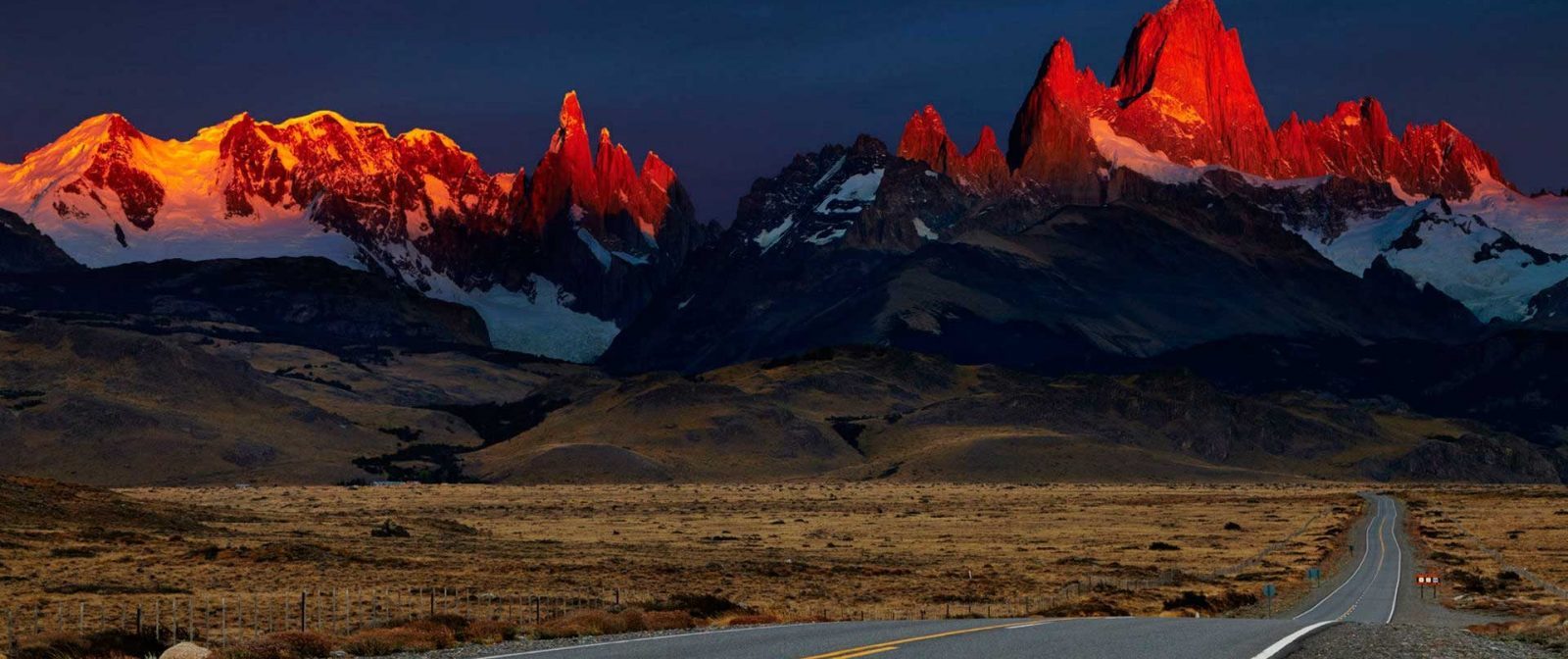
Bike Odyssey is the coolest cycle tour company in the cosmos! I can’t wait to get to the next tour! Thanks to Sam and the team.

Che is my second tour with Sam and his team. It was great… again! I would highly recommend them and now wondering when I can line up my third tour.
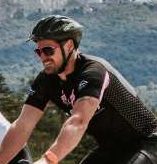
As inexperienced cyclists we were very capably supported throughout the wonderful Che tour, an exotic, challenging and exciting experience. Wonderful arrangements, great guides and support staff, and the ability to adapt to the different needs of the riders and local situations. They were also great at helping the group gel and work well together.
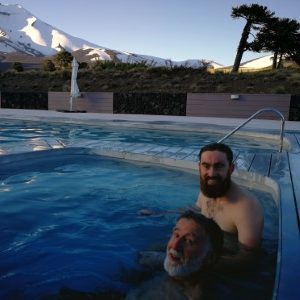
There’s no better way to see these countries, especially the Andes. Cycling routes were challenging and time off the bike was spectacular. Accommodation was a destination in itself. Guides were excellent! It was tough but the rewards made every pedal stroke worthwhile. The 80km lakeside route culminating in the climb of Volcan Osorno was awesome and, as always, rewarded with a pisco sour. Great people, great challenges and countries that took me to places I’d never imagined! I’ll be lining up for another tour next year.
